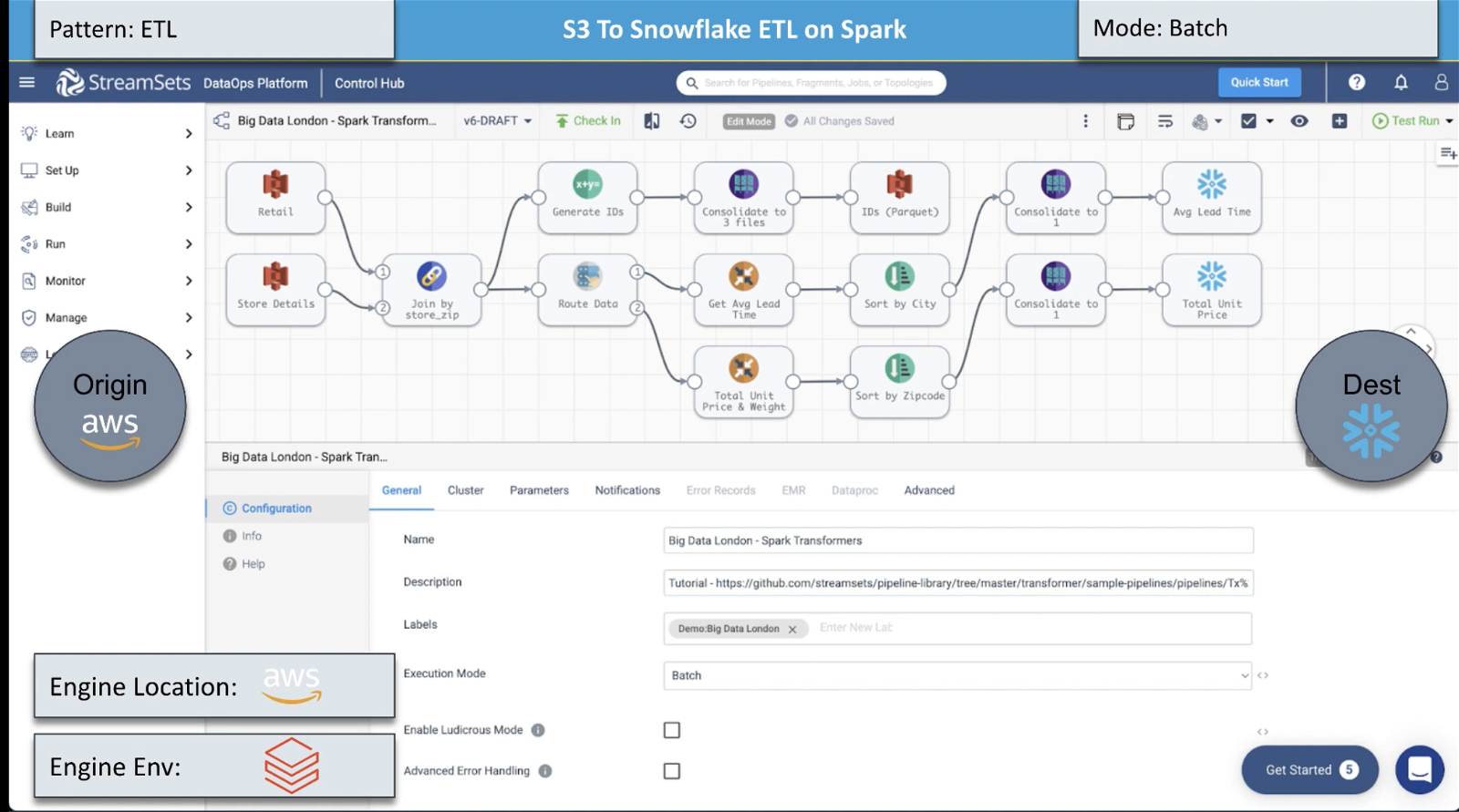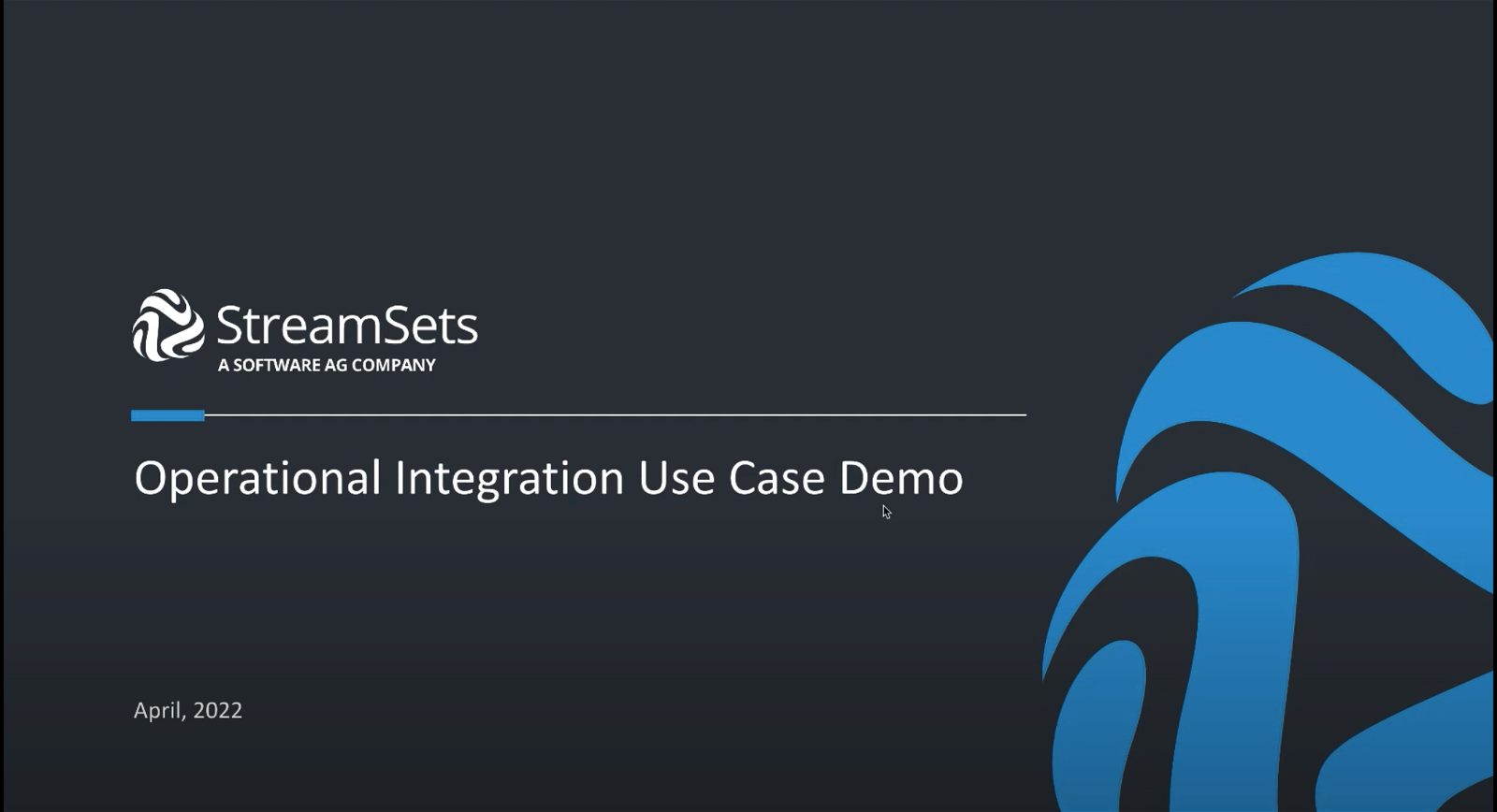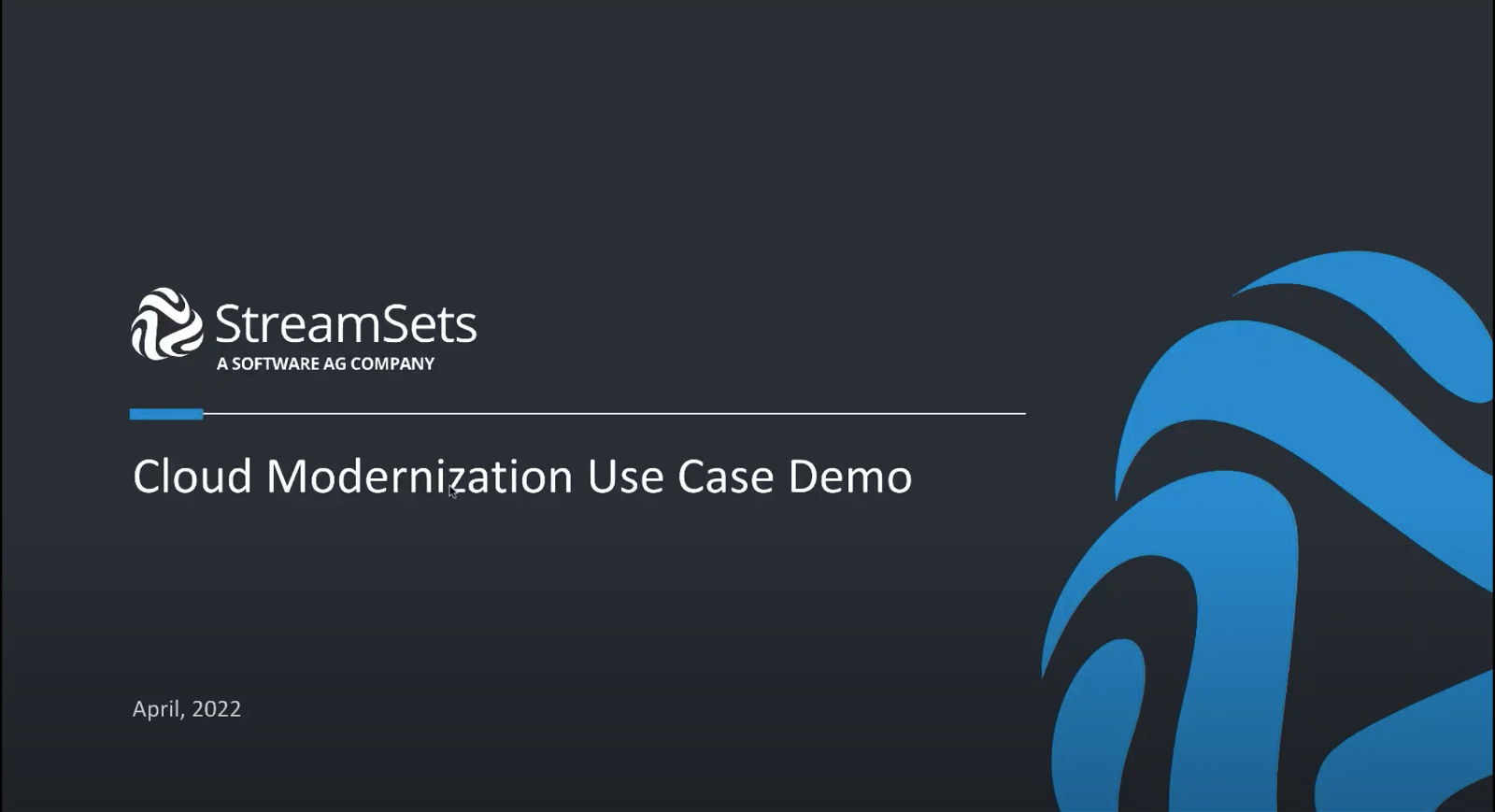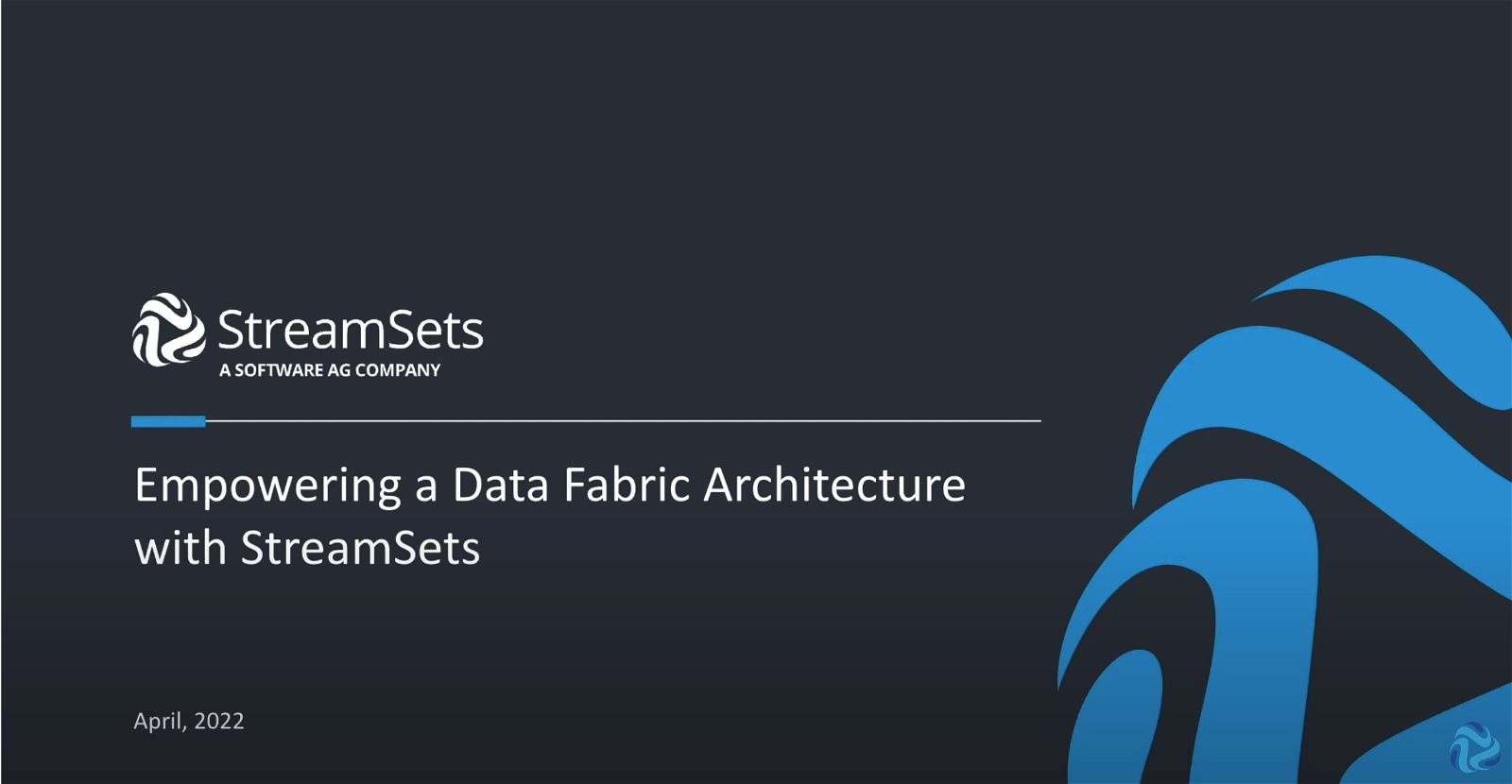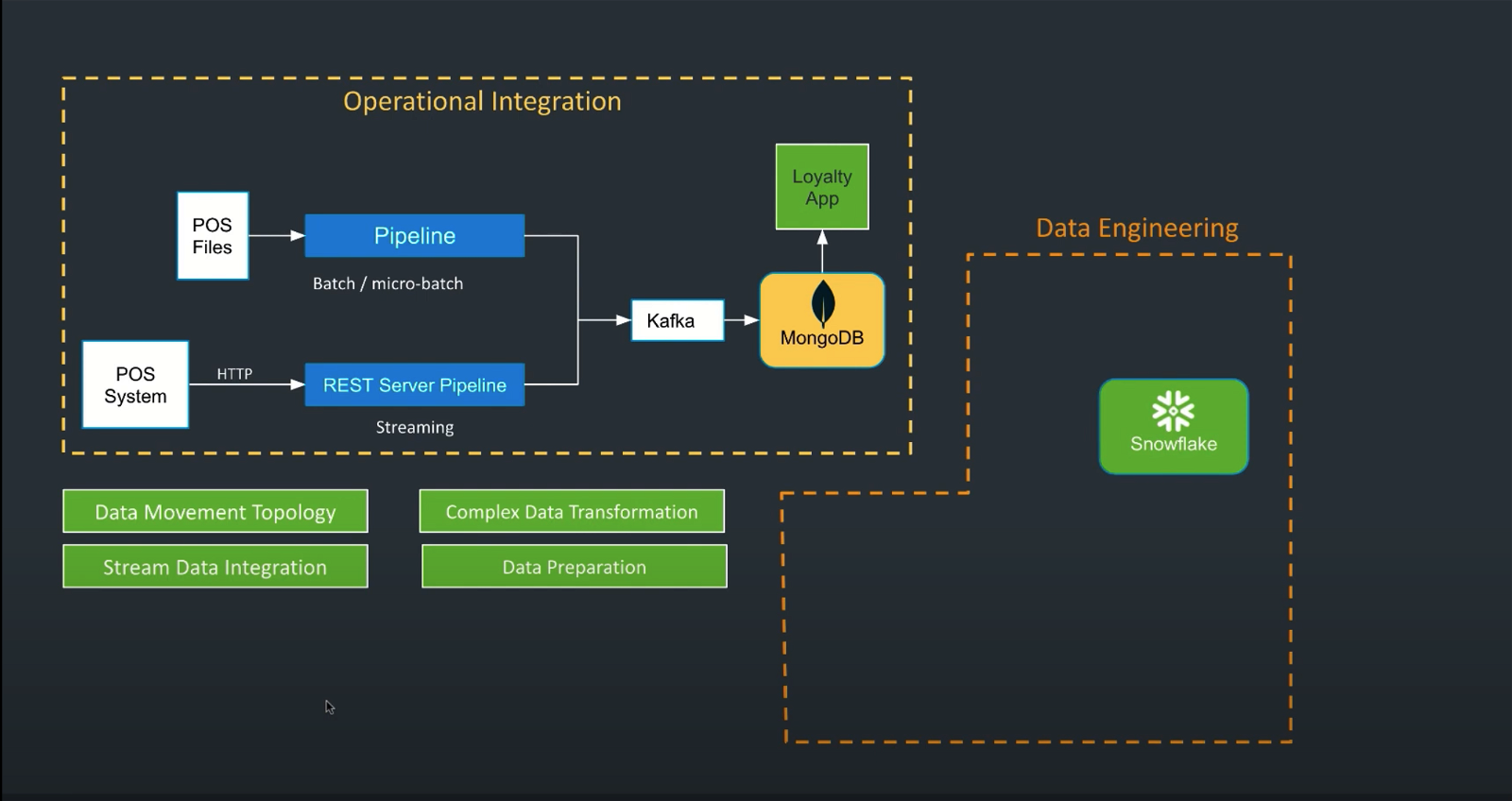StreamSets DataOps Platform Demos
Product Differentiators
Learn about features unique to StreamSets DataOps Platform.
- Single experience for all design patterns: Accomplish a wide variety of data movement patterns and architectures in one user interface. Makes adoption much easier!
- Platform built for change: StreamSets schemaless engine manages data drift. Dynamic data pipelines are resilient to change, more robust, and eliminate 80% of break-fix maintenance.
- APIs and automation: Everything in the UI can be accomplished through a REST AP call. Plus, automate testing, auto-generate and modify pipelines and jobs, create custom origins, processors, and destinations as needed, and much more.
- Enable data engineers to enable the enterprise: StreamSets includes out of the box extensibility, allows for extensive customization, and the ability to create reusable connections, fragments, pipelines, jobs, and more.
Operational Data Integration
See examples of how StreamSets supports operational data integration use cases.
- Data Movement topology
- Stream data integration
- API services
- Complex data transformations
- Augmented data integration
- DataOps support
Cloud Modernization
See how StreamSets addresses critical capabilities for cloud modernization:
- Hybrid approach for deploying engines
- Data movement topology
- Connectivity and interoperability with cloud service providers
Data Fabric Architecture
Hear StreamSets perspective on Data Fabrics and how you can use StreamSets to build your data fabric.
70% of the video walks you through a demo of how to build your data fabric pipeline. We’ll then briefly discuss our plans for building metadata layer within our platform to empower your data fabric architecture.
Data Engineering
See how StreamSets delivers on the following critical capabilities through a data engineering use case: :
- Data movement topology
- Stream data integration
- Metadata support
In this data engineering use case, the organization:
- Is standardizing on Snowflake
- Needs to replicate/sync data from on-prem databases with their cloud data warehouse
- Will take data from MongoDB and push it into Snowflake for analytics
- Will need to manage raw data into proper Slowly Changing Dimensions
